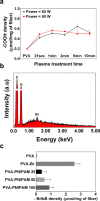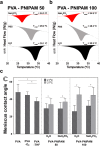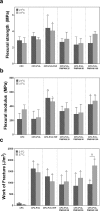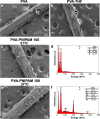Thermoresponsive Brushes Facilitate Effective Reinforcement of Calcium Phosphate Cements
- PMID: 31246399
- PMCID: PMC6676411
- DOI: 10.1021/acsami.9b08311
Thermoresponsive Brushes Facilitate Effective Reinforcement of Calcium Phosphate Cements
Abstract
Calcium phosphate ceramics are frequently applied to stimulate regeneration of bone in view of their excellent biological compatibility with bone tissue. Unfortunately, these bioceramics are also highly brittle. To improve their toughness, fibers can be incorporated as the reinforcing component for the calcium phosphate cements. Herein, we functionalize the surface of poly(vinyl alcohol) fibers with thermoresponsive poly(N-isopropylacrylamide) brushes of tunable thickness to improve simultaneously fiber dispersion and fiber-matrix affinity. These brushes shift from hydrophilic to hydrophobic behavior at temperatures above their lower critical solution temperature of 32 °C. This dual thermoresponsive shift favors fiber dispersion throughout the hydrophilic calcium phosphate cements (at 21 °C) and toughens these cements when reaching their hydrophobic state (at 37 °C). The reinforcement efficacy of these surface-modified fibers was almost double at 37 versus 21 °C, which confirms the strong potential of thermoresponsive fibers for reinforcement of calcium phosphate cements.
Keywords: calcium phosphate cements; interface; poly(-isopropylacrylamide); poly(vinyl alcohol) fibers; reinforcement.
Conflict of interest statement
The authors declare no competing financial interest.
Figures









References
-
- Barralet J. E.; Tremayne M.; Lilley K. J.; Gbureck U. Modification of Calcium Phosphate Cement with Alpha-Hydroxy Acids and Their Salts. Chem. Mater 2005, 17, 1313–1319. 10.1021/cm048803z. - DOI
MeSH terms
Substances
LinkOut - more resources
Full Text Sources

